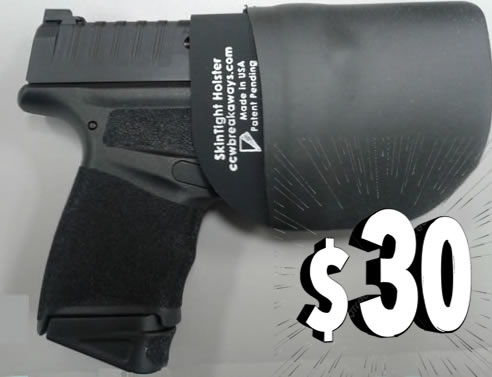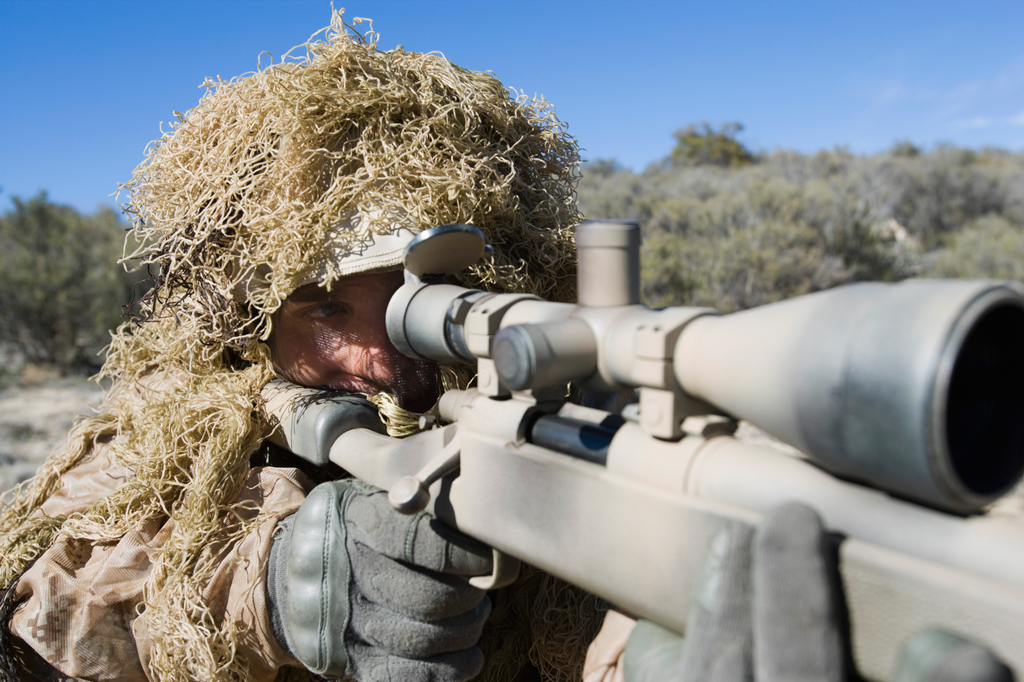
Firearms Of Frogmen

Underwater Pistols Used By Combat Divers Around The World
The Soviet Union was the first to begin developing firearms specifically for their combat divers. The Soviet Navy was worried about divers attacking their ships in their naval anchorages, and in particular those of the Black Sea fleet based in Sevastopol, located on the Crimean Peninsula, and Odessa, Ukraine. These anchorages could be easily threatened by NATO forces operating out of Turkey. It wasn’t an idle worry. The use of divers to attack anchored ships was used extensively by the Italian Navy during World War II, and the British Navy developed their techniques by using captured Italian equipment.

The Soviet Navy had as many as 1,000 combat divers in their Black Sea fleet,
but averaged about 300 in most other naval bases. Known as Naval Spetnaz
divers, these divers were not trained to the same level as US Navy SEALs, but then again, they had a more limited role in protecting their fleet from underwater attacks than US teams.
The B-V1-307 Underwater Handgun
The designer of the first underwater pistol was Dmitry Shiryaev of the TsNIITochMash plant, otherwise known as the Central Research Institute for precision machine building, a Russian industrial-design bureau. In the early 1960s, he designed the B-VI-307, a simple four-barrelled hinged-break pistol that fired a flechette, or tiny arrow, rocket-assisted 7.62mm round. These rounds stabilized in water by using a cavitation bubble. This bubble was generated around the front of the flechette by the specially designed shape of the nose. When fired above water, however, the round was for all intents and purposes useless. The flechette tumbled once it left the barrel and was only capable of causing a wound at point-blank range.

The Soviet Union’s B-VI 307 underwater pistol was a simple four-barrelled hinged-break pistol that fired a flechette rocket-assisted 7.62mm round.
The gun had one round in each chamber, with an opening on each of the bolt faces for the striker. The double-action trigger cycled the rotating striker, separately firing the 8-inch, smoothbore barrels with each pull of the trigger. Since the gun was designed to be carried and used in saltwater, it was built using noncorrosive metals and specially coated internals with plastic furniture.
To accommodate the thick neoprene gloves worn by divers operating in subfreezing waters, the trigger guard and combination safety lever and barrel-hinged lock were oversized. Although this weapon was produced in small numbers and tested by the Soviet Navy, it was not adopted, reportedly because the rocket-assisted round was too advanced for the military at that time.
Russian Navy SPP-1 Underwater Pistol

The design team went back to the drawing board and created the SPP-1 pistol. This was basically a cruder version of the B-VI-307 and cheaper to produce. This gun retained the simple break-open design with a cluster of four smooth-bore barrels and double-action trigger, but the rocket-assisted projectile was abandoned in favor of a simple 4.5mm rimmed cartridge flechette-firing round utilizing a conventional cartridge propellant. The round was protected against water by using a sealant in the neck and a lacquer coating on the primer. The flechette also used the cavitation-bubble design and was as equally ineffective above water as the original. The 4.5mm cartridge was effective to 55 feet underwater, and that varied based on the depth. The range decreased as the depth increased. The new design was eventually accepted by the Soviet Navy and entered service in 1971. It is believed that the Naval Forces of the Russian Federation still use this weapon today.

US M1 Underwater Defense Pistol

While the Soviets were developing the SPP-1, the United States was working on the design of their M1 Underwater Defense Gun for the US Navy combat swimmers. Much of the development was carried out at the Naval Surface Weapons Center Laboratory in Silver Springs, Md. In what appears to be an amazing coincidence of similarity, the original concept for the US weapon fired a lancejet round. This was a rocket-propelled round based on gyrojet weapons and projectiles. These had been developed commercially some years earlier, but were never taken up or adopted by the military. Like the Russians, the US military decided this round was too innovative, not to mention costly and totally inaccurate above ground, so the idea was scrapped.
The M1 designed the Mark 59 underwater ammunition as an attempt at a more conventional round. The Mark 59 ammunition was contained in a preloaded, stainless-steel, six-round cylinder. The cylinder was 5.5 inches long and was effectively a “pepperbox” configuration with each chamber acting as its own barrel. The six chambers contained a 4.25-inch, heavy-stabilized, tungsten-fin darts, which were propelled from the weapon by a captive piston when the gun was fired. With a muzzle velocity of 738 feet per second, the effective 32-foot range at a depth of about 60 feet was similar to the SSP-1. The frame, action, door assembly and cylinder were all made from lightweight alloys while the other parts were machined from stainless steel and the double-action trigger was made of nylon.
The M1 entered into service in 1970 and was not overly popular, mostly due to its bulky configuration. It was withdrawn from service in the 1980s and replaced by the Heckler & Koch HK P11 underwater pistol.
Heckler & Koch P11
The HK P11 is one of the least-known weapons to emerge from Heckler & Koch’s factory in Germany’s Black Forest. For a long time H&K would not even acknowledge its existence, but recently some details have become available.

Developed during the 1970s to arm the Kampfschwimmer, the commando frogmen of the German Bundeswehr, this weapon has since been adopted by other NATO navies, including those of Italy, France, Norway, the Netherlands, UK and the US.
The P11 and the ammunition is somewhat bulkier than the SPP-1 Soviet counterpart, and just like the US M1 underwater pistol, it uses a detachable pepperbox cluster of five barrels, each factory loaded with a powder charge and a drag-stabilized, flechette-dart projectile. Each projectile is 117mm long and weighs 31 grams with a muzzle velocity of 351 fps.

The pistol is reloaded by replacing the entire barrel cluster. Loaded barrels are protected from saltwater by thin diaphragms, which are destroyed when the projectile is fired. The propellant in each barrel is electronically ignited using 9-volt batteries that are stored in a sealed container inside the pistol grip. The nature of the propellant is still classified information. End users cannot recharge the barrel cluster. It has to be returned to Heckler & Koch to be reloaded.
The effective underwater range depends on the depth, but the maximum is about 50 feet. Above water, the effective range is quoted as being around 65 feet, and while the long and relatively heavy flechette can be lethal at longer ranges, accuracy is minimized by the flechette tumbling and yawing in flight. AmSJ
For more information, on the MK1, by renowned war journalist Joe Trevithick, you can visit him here.
Editor’s note: Part II is we look at Underwater Rifles used by frogmen here.






